Comparative Study of Opuntia ficus-indica Polymers, HPAM, and Their Mixture for Enhanced Oil Recovery in the Hassi Messaoud Reservoir, Algeria
Abstract
1. Introduction
2. Geological Setting
3. Materials and Methods
3.1. Isolation of Opuntia ficus-indica Powder and Fluid Preparation
3.1.1. Extraction of Opuntia ficus-indica Powder
3.1.2. Crude Oil and Brine
3.1.3. Fluid Preparation
3.1.4. Core Samples
3.2. Physicochemical Analysis
3.2.1. Thermal Analysis
3.2.2. Scanning Electron Microscopy (SEM) and Energy Dispersive X-Ray (EDX) Analysis
3.2.3. X-Ray Diffraction (XRD) Analysis
3.2.4. Fourier-Transform Infrared (FTIR) Spectroscopy
3.2.5. Rheological Measurements
3.2.6. Assessment of Polymer Efficiency in Core Flooding Analysis
3.2.7. Statistical Analysis
4. Results and Discussion
4.1. Thermal Analysis
4.2. SEM and EDX Analysis
4.3. X-Ray Diffraction Analysis (XRD)
4.4. FTIR Analysis
4.5. Rheological Measurements
4.6. Core Flooding Analysis: Comparative Evaluation of HPAM, Opuntia ficus-indica, and Mixed Solutions for EOR
4.6.1. Analysis of Pressure Drop and Volumetric Flow Rate for Different Polymer Solutions in Core Flooding
4.6.2. Analysis of Fluid Displacement Curves in Core Flooding
4.6.3. SEM and EDX Analysis of the Plugs Before and After Injection
4.6.4. X-Ray Diffraction Analysis of Plugs Before and After Injection
5. Conclusions
Author Contributions
Funding
Data Availability Statement
Conflicts of Interest
References
- Alvarado, V.; Manrique, E. Enhanced Oil Recovery: An Update Review. Energies 2010, 3, 1529–1575. [Google Scholar] [CrossRef]
- Bello, A.; Ivanova, A.; Cheremisin, A. Foam EOR as an Optimization Technique for Gas EOR: A Comprehensive Review of Laboratory and Field Implementations. Energies 2023, 16, 972. [Google Scholar] [CrossRef]
- Mahboob, A.; Kalam, S.; Kamal, M.S.; Hussain, S.M.S.; Solling, T. EOR Perspective of Microemulsions: A Review. J. Pet. Sci. Eng. 2022, 208, 109312. [Google Scholar] [CrossRef]
- Mogensen, K.; Masalmeh, S. A Review of EOR Techniques for Carbonate Reservoirs in Challenging Geological Settings. J. Pet. Sci. Eng. 2020, 195, 107889. [Google Scholar] [CrossRef]
- Malozyomov, B.V.; Martyushev, N.V.; Kukartsev, V.V.; Tynchenko, V.S.; Bukhtoyarov, V.V.; Wu, X.; Tyncheko, Y.A.; Kukartsev, V.A. Overview of Methods for Enhanced Oil Recovery from Conventional and Unconventional Reservoirs. Energies 2023, 16, 4907. [Google Scholar] [CrossRef]
- Kang, W.-L.; Zhou, B.-B.; Issakhov, M.; Gabdullin, M. Advances in Enhanced Oil Recovery Technologies for Low Permeability Reservoirs. Pet. Sci. 2022, 19, 1622–1640. [Google Scholar] [CrossRef]
- Davoodi, S.; Al-Shargabi, M.; Wood, D.A.; Rukavishnikov, V.S.; Minaev, K.M. Experimental and Field Applications of Nanotechnology for Enhanced Oil Recovery Purposes: A Review. Fuel 2022, 324, 124669. [Google Scholar] [CrossRef]
- Xu, Z.-X.; Li, S.-Y.; Li, B.-F.; Chen, D.-Q.; Liu, Z.-Y.; Li, Z.-M. A Review of Development Methods and EOR Technologies for Carbonate Reservoirs. Pet. Sci. 2020, 17, 990–1013. [Google Scholar] [CrossRef]
- Liu, X.; Lai, J.; Fan, X.; Shu, H.; Wang, G.; Ma, X.; Liu, M.; Guan, M.; Luo, Y. Insights in the Pore Structure, Fluid Mobility and Oiliness in Oil Shales of Paleogene Funing Formation in Subei Basin, China. Mar. Pet. Geol. 2020, 114, 104228. [Google Scholar] [CrossRef]
- Guetni, I.; Marlière, C.; Rousseau, D.; Pelletier, M.; Bihannic, I.; Villiéras, F. Transport of EOR Polymer Solutions in Low Permeability Porous Media: Impact of Clay Type and Injection Water Composition. J. Pet. Sci. Eng. 2020, 186, 106690. [Google Scholar] [CrossRef]
- Jiang, W.; Hou, Z.; Wu, X.; Song, K.; Yang, E.; Huang, B.; Dong, C.; Lu, S.; Sun, L.; Gai, J.; et al. A New Method for Calculating the Relative Permeability Curve of Polymer Flooding Based on the Viscosity Variation Law of Polymer Transporting in Porous Media. Molecules 2022, 27, 3958. [Google Scholar] [CrossRef] [PubMed]
- Liao, H.; Yu, H.; Xu, G.; Liu, P.; He, Y.; Zhou, Y. Polymer-Surfactant Flooding in Low-Permeability Reservoirs: An Experimental Study. ACS Omega 2022, 7, 4595–4605. [Google Scholar] [CrossRef] [PubMed]
- Guo, H.; Song, K.; Hilfer, R. A Critical Review of Capillary Number and Its Application in Enhanced Oil Recovery. In Proceedings of the SPE Improved Oil Recovery Conference, Virtual, 31 August–4 September 2020. [Google Scholar]
- Zhang, J.; Wang, S.; Wang, X.; Huang, B.; Zuo, M.; Chen, H. The Influence Mechanism and the Contribution of Capillary Force and Gravity to Recovery in Spontaneous Imbibition in Low Permeability Reservoirs. J. Dispers. Sci. Technol. 2024, 45, 720–730. [Google Scholar] [CrossRef]
- Zhang, Y.; Wang, Y.; Gao, J.; Cui, Y.; Wang, S. Study of the Influence of Dynamic and Static Capillary Forces on Production in Low-Permeability Reservoirs. Energies 2023, 16, 1554. [Google Scholar] [CrossRef]
- Gao, W.; Tang, X.; Xu, M.; Li, Y.; Zhong, Y.; Kong, D.; Wen, Y.; Li, Q. Surfactant–Polymer Viscosity Effects on Enhanced Oil Recovery Across Pore Structures: Microfluidic Insights from Pore Scale to Darcy Scale. Energy Fuels 2024, 38, 17380–17391. [Google Scholar] [CrossRef]
- Rezaei, A.; Abdollahi, H.; Derikvand, Z.; Hemmati-Sarapardeh, A.; Mosavi, A.; Nabipour, N. Insights into the Effects of Pore Size Distribution on the Flowing Behavior of Carbonate Rocks: Linking a Nano-Based Enhanced Oil Recovery Method to Rock Typing. Nanomaterials 2020, 10, 972. [Google Scholar] [CrossRef]
- Kalam, S.; Abu-Khamsin, S.A.; Kamal, M.S.; Patil, S. A Review on Surfactant Retention on Rocks: Mechanisms, Measurements, and Influencing Factors. Fuel 2021, 293, 120459. [Google Scholar] [CrossRef]
- Mushtaq, M.; Al-Shalabi, E.W.; AlAmeri, W. A Review on Retention of Surfactants in Enhanced Oil Recovery: A Mechanistic Insight. Geoenergy Sci. Eng. 2023, 230, 212243. [Google Scholar] [CrossRef]
- Salam, A.H.; Alsaif, B.; Hussain, S.M.S.; Khan, S.; Kamal, M.S.; Patil, S.; Al-Shalabi, E.W.; Hassan, A.M. Advances in Understanding Polymer Retention in Reservoir Rocks: A Comprehensive Review. Polym. Rev. 2024, 64, 1387–1413. [Google Scholar] [CrossRef]
- Al-shalabi, E.W. Effects of Trapping Number on Biopolymer Flooding Recovery of Carbonate Reservoirs. Pet. Explor. Dev. 2022, 49, 895–905. [Google Scholar] [CrossRef]
- Beteta, A.; McIver, K.; Vazquez, O.; Boak, L.; Jordan, M.; Shields, R. The Impact of EOR Polymers on Scale Inhibitor Adsorption. In Proceedings of the SPE Virtual International Oilfield Scale Conference and Exhibition 2020, Virtual, 24–25 June 2020. [Google Scholar] [CrossRef]
- Belhaj, A.; Elraies, K.; Sarma, H.; Muhamad Shuhili, J.A.; Mahmood, S.; Alnarabiji, M. Surfactant Partitioning and Adsorption in Chemical EOR: The Neglected Phenomenon in Porous Media. In Proceedings of the SPE/IATMI Asia Pacific Oil & Gas Conference and Exhibition, Virtual, 12–14 October 2021. [Google Scholar]
- Skauge, A.; Zamani, N.; Gausdal Jacobsen, J.; Shaker Shiran, B.; Al-Shakry, B.; Skauge, T. Polymer Flow in Porous Media: Relevance to Enhanced Oil Recovery. Colloids Interfaces 2018, 2, 27. [Google Scholar] [CrossRef]
- Cancela, B.R.; Palermo, L.C.M.; de Oliveira, P.F.; Mansur, C.R.E. Rheological Study of Polymeric Fluids Based on HPAM and Fillers for Application in EOR. Fuel 2022, 330, 125647. [Google Scholar] [CrossRef]
- Du, Y.; Zhu, Y.; Ji, Y.; Xu, H.; Zhang, H.; Yuan, S. Effect of Salt-Resistant Monomers on Viscosity of Modified Polymers Based on the Hydrolyzed Poly-Acrylamide (HPAM): A Molecular Dynamics Study. J. Mol. Liq. 2021, 325, 115161. [Google Scholar] [CrossRef]
- Kang, P.-S.; Lim, J.-S.; Huh, C. Temperature Dependence of the Shear-Thinning Behavior o Partially Hydrolyzed Polyacrylamide Solution for Enhanced Oil Recovery. J. Energy Resour. Technol. 2020, 143, 063002. [Google Scholar] [CrossRef]
- Santos, J.F.; Santos, A.S.; de Oliveira, P.F.; Santos, I.C.V.M.; Mansur, C.R.E. Statistical and Rheological Evaluation of the Effect of Salts in Partially Hydrolyzed Polyacrylamide Solutions. J. Appl. Polym. Sci. 2024, 141, e55278. [Google Scholar] [CrossRef]
- Fu, X.; Qin, F.; Liu, T.; Zhang, X. Enhanced Oil Recovery Performance and Solution Properties of Hydrophobic Associative Xanthan Gum. Energy Fuels 2022, 36, 181–194. [Google Scholar] [CrossRef]
- Navaie, F.; Esmaeilnezhad, E.; Jin Choi, H. Xanthan Gum-Added Natural Surfactant Solution of Chuback: A Green and Clean Technique for Enhanced Oil Recovery. J. Mol. Liq. 2022, 354, 118909. [Google Scholar] [CrossRef]
- Elsaeed, S.M.; Zaki, E.G.; Omar, W.A.E.; Ashraf Soliman, A.; Attia, A.M. Guar Gum-Based Hydrogels as Potent Green Polymers for Enhanced Oil Recovery in High-Salinity Reservoirs. ACS Omega 2021, 6, 23421–23431. [Google Scholar] [CrossRef]
- Said, M.; Haq, B.; Al Shehri, D.; Rahman, M.M.; Muhammed, N.S.; Mahmoud, M. Modification of Xanthan Gum for a High-Temperature and High-Salinity Reservoir. Polymers 2021, 13, 4212. [Google Scholar] [CrossRef]
- Sayyouh, M.H.; Al-Blehed, M. Screening Criteria for Enhanced Recovery of Saudi Crude OUs. Energy Sources 1990, 12, 71–82. [Google Scholar] [CrossRef]
- Melo, M.A.; Lins, A.G.; Silva, I.P. Lessons Learned From Polymer Flooding Pilots in Brazil. In Proceedings of the SPE Latin America and Caribbean Mature Fields Symposium, Salvador, Bahia, Brazil, 15–16 March 2017. [Google Scholar]
- Shuker, M.T.; Buriro, M.A.; Hamza, M.M. Enhanced Oil Recovery: A Future for Pakistan. In Proceedings of the SPE/PAPG Annual Technical Conference, Islamabad, Pakistan, 3–5 December 2012. [Google Scholar]
- Helmi, M.E.; Abu El Ela, M.; Desouky, S.M.; Sayyouh, M.H. Effects of Nanocomposite Polymer Flooding on Egyptian Crude Oil Recovery. J. Petrol. Explor. Prod. Technol. 2020, 10, 3937–3945. [Google Scholar] [CrossRef]
- Ali, H.A.; Musa, T.A.; Doroudi, A. Chemical Enhanced Oil Recovery Pilot Design for Heglig Main Field-Sudan. In Proceedings of the SPE Saudi Arabia Section Annual Technical Symposium and Exhibition, Al-Khobar, Saudi Arabia, 21–23 April 2015; SPE-177984-MS. [Google Scholar] [CrossRef]
- Gutierrez, M.; Castro, R.H.; Corredor, L.M.; Fernández, F.R.; Zapata, J.; Jimenez, J.A.; Reyes, J.D.; Rojas, D.M.; Jimenez, R.; Acosta, T.; et al. Chemical Enhanced Oil Recovery Experiences in Colombia: Field Pilots Review. In Proceedings of the SPE Improved Oil Recovery Conference, Tulsa, OK, USA, 22–25 April 2024; D031S019R003. [Google Scholar] [CrossRef]
- Zhang, X.; Han, M.; Fuseni, A.; Alsofi, A.M. An Approach to Evaluate Polyacrylamide-Type Polymers’ Long-Term Stability under High Temperature and High Salinity Environment. J. Pet. Sci. Eng. 2019, 180, 518–525. [Google Scholar] [CrossRef]
- Zhang, L.; Khan, N.; Pu, C. A New Method of Plugging the Fracture to Enhance Oil Production for Fractured Oil Reservoir Using Gel Particles and the HPAM/Cr3+ System. Polymers 2019, 11, 446. [Google Scholar] [CrossRef] [PubMed]
- Wang, B.; Lin, M.; Guo, J.; Wang, D.; Xu, F.; Li, M. Plugging Properties and Profile Control Effects of Crosslinked Polyacrylamide Microspheres. J. Appl. Polym. Sci. 2016, 133. [Google Scholar] [CrossRef]
- Guo, H. How to Select Polymer Molecular Weight and Concentration to Avoid Blocking in Polymer Flooding? In Proceedings of the SPE Symposium: Production Enhancement and Cost Optimisation, Kuala Lumpur, Malaysia, 7–8 November 2017. [Google Scholar]
- Wu, H.; Ge, J.; Yang, L.; Yang, Y.; Zhang, T.; Guo, H. Developments of Polymer Gel Plug for Temporary Blocking in SAGD Wells. J. Pet. Sci. Eng. 2022, 208, 109650. [Google Scholar] [CrossRef]
- Ekunke, V.; Kosi, S.; Junior, J.; Obada, O.; Ikechukwu, S.; Ifechukwu, J.; Collins, I.; Chadi, P.; Ibe, M.; Peter, Y. Enhanced Oil Recovery Methods Using Biodegradable Materials in Different Reservoirs. Glob. Sci. J. 2024, 12, 647–664. [Google Scholar]
- Haq, B.; Liu, J.; Liu, K.; Al Shehri, D. The Role of Biodegradable Surfactant in Microbial Enhanced Oil Recovery. J. Pet. Sci. Eng. 2020, 189, 106688. [Google Scholar] [CrossRef]
- Barba, F.J.; Garcia, C.; Fessard, A.; Munekata, P.E.S.; Lorenzo, J.M.; Aboudia, A.; Ouadia, A.; Remize, F. Opuntia Ficus Indica Edible Parts: A Food and Nutritional Security Perspective. Food Rev. Int. 2022, 38, 930–952. [Google Scholar] [CrossRef]
- Ribeiro, R.C.d.A.; Barreto, S.M.d.A.G.; Ostrosky, E.A.; da Rocha-Filho, P.A.; Veríssimo, L.M.; Ferrari, M. Production and Characterization of Cosmetic Nanoemulsions Containing Opuntia ficus-indica (L.) Mill Extract as Moisturizing Agent. Molecules 2015, 20, 2492–2509. [Google Scholar] [CrossRef]
- Bayar, N.; Kriaa, M.; Kammoun, R. Extraction and Characterization of Three Polysaccharides Extracted from Opuntia Ficus Indica Cladodes. Int. J. Biol. Macromol. 2016, 92, 441–450. [Google Scholar] [CrossRef]
- Quinzio, C.; Ayunta, C.; Alancay, M.; de Mishima, B.L.; Iturriaga, L. Physicochemical and Rheological Properties of Mucilage Extracted from Opuntia Ficus Indica (L. Miller). Comparative Study with Guar Gum and Xanthan Gum. Food Meas. 2018, 12, 459–470. [Google Scholar] [CrossRef]
- Medina-Torres, L.; Brito-De La Fuente, E.; Torrestiana-Sanchez, B.; Katthain, R. Rheological Properties of the Mucilage Gum (Opuntia Ficus Indica). Food Hydrocoll. 2000, 14, 417–424. [Google Scholar] [CrossRef]
- Bourkaib, K.; Hadjsadok, A.; Djedri, S. Synergistic Effect of Opuntia ficus-indica Cladode Mucilage on Physicochemical and Rheological Properties of HPAM Polymer Solutions for EOR Application. Colloids Surf. A Physicochem. Eng. Asp. 2024, 691, 133794. [Google Scholar] [CrossRef]
- Andrade, L.A.; Nunes, C.A.; Pereira, J. Physical and Chemical Analysis in Crude Taro Mucilage Obtained by Simple Extraction Technique. Bol. Cent. Pesqui. Process. Aliment. 2019, 37. [Google Scholar] [CrossRef]
- Otálora, M.C.; Gómez Castaño, J.A.; Wilches-Torres, A. Preparation, Study and Characterization of Complex Coacervates Formed between Gelatin and Cactus Mucilage Extracted from Cladodes of Opuntia ficus-indica. LWT 2019, 112, 108234. [Google Scholar] [CrossRef]
- Otálora, M.C.; Carriazo, J.G.; Iturriaga, L.; Nazareno, M.A.; Osorio, C. Microencapsulation of Betalains Obtained from Cactus Fruit (Opuntia ficus-indica) by Spray Drying Using Cactus Cladode Mucilage and Maltodextrin as Encapsulating Agents. Food Chem. 2015, 187, 174–181. [Google Scholar] [CrossRef]
- Manhivi, V.E.; Venter, S.; Amonsou, E.O.; Kudanga, T. Composition, Thermal and Rheological Properties of Polysaccharides from Amadumbe (Colocasia Esculenta) and Cactus (Opuntia Spp.). Carbohydr. Polym. 2018, 195, 163–169. [Google Scholar] [CrossRef]
- Otálora, M.C.; Wilches-Torres, A.; Castaño, J.A.G. Extraction and Physicochemical Characterization of Dried Powder Mucilage from Opuntia ficus-indica Cladodes and Aloe Vera Leaves: A Comparative Study. Polymers 2021, 13, 1689. [Google Scholar] [CrossRef]
- Maurer, J.J.; Schulz, D.N.; Siano, D.B.; Bock, J. Thermal Analysis of Acrylamide-Based Polymers. In Analytical Calorimetry; Johnson, J.F., Gill, P.S., Eds.; Springer: Boston, MA, USA, 1984; Volume 5, pp. 43–55. ISBN 978-1-4613-2699-1. [Google Scholar]
- Neamtu, I.; Chiriac, A.P.; Nita, L.E. Characterization of Poly(Acrylamide) as Temperature- Sensitive Hydrogel. J. Optoelectron. Adv. Mater. 2006, 8. [Google Scholar]
- Olajire, A.A. Review of ASP EOR (Alkaline Surfactant Polymer Enhanced Oil Recovery) Technology in the Petroleum Industry: Prospects and Challenges. Energy 2014, 77, 963–982. [Google Scholar] [CrossRef]
- Ouhammou, M.; Nabil, B.; Hidar, N.; Ouaabou, R.; Bouchdoug, M.; Jaouad, A.; Mahrouz, M. Chemical Activation of the Skin of Prickly Pear Fruits and Cladode Opuntia Megacantha: Treatment of Textile Liquid Discharges. S. Afr. J. Chem. Eng. 2021, 37, 118–126. [Google Scholar] [CrossRef]
- Sosa-Fernandez, P.A.; Miedema, S.J.; Bruning, H.; Leermakers, F.A.M.; Rijnaarts, H.H.M.; Post, J.W. Influence of Solution Composition on Fouling of Anion Exchange Membranes Desalinating Polymer-Flooding Produced Water. J. Colloid Interface Sci. 2019, 557, 381–394. [Google Scholar] [CrossRef] [PubMed]
- Benhamou, A.; Boussetta, A.; Grimi, N.; Idrissi, M.E.; Nadifiyine, M.; Barba, F.J.; Moubarik, A. Characteristics of Cellulose Fibers from Opuntia Ficus Indica Cladodes and Its Use as Reinforcement for PET Based Composites. J. Nat. Fibers 2022, 19, 6148–6164. [Google Scholar] [CrossRef]
- Contreras-Padilla, M.; Rivera-Muñoz, E.M.; Gutiérrez-Cortez, E.; del López, A.R.; Rodríguez-García, M.E. Characterization of Crystalline Structures in Opuntia ficus-indica. J. Biol. Phys. 2015, 41, 99–112. [Google Scholar] [CrossRef]
- Bao, M.; Chen, Q.; Li, Y.; Jiang, G. Biodegradation of Partially Hydrolyzed Polyacrylamide by Bacteria Isolated from Production Water after Polymer Flooding in an Oil Field. J. Hazard. Mater. 2010, 184, 105–110. [Google Scholar] [CrossRef]
- Haruna, M.A.; Pervaiz, S.; Hu, Z.; Nourafkan, E.; Wen, D. Improved Rheology and High-Temperature Stability of Hydrolyzed Polyacrylamide Using Graphene Oxide Nanosheet. J. Appl. Polym. Sci. 2019, 136, 47582. [Google Scholar] [CrossRef]
- Monje, P.V.; Baran, E.J. Complex Biomineralization Pattern in Cactaceae. J. Plant Physiol. 2004, 161, 121–123. [Google Scholar] [CrossRef]
- Azli, N.B.; Junin, R.; Agi, A.A.; Risal, A.R. Partially Hydrolyzed Polyacrylamide Apparent Viscosity in Porous Media Enhancement by Silica Dioxide Nanoparticles under High Temperature and High Salinity. J. Appl. Sci. Eng. 2021, 25, 581–593. [Google Scholar] [CrossRef]
- Magami, S.; Haruna, M. Influence of Nanoparticle Size Distributions on the (in)Stability and Rheology of Colloidal SiO2 Dispersions and HPAM/SiO2 Nanofluid Hybrids. Fine Chem. Eng. 2023, 4, 257–270. [Google Scholar] [CrossRef]
- Cardenas, A.; Higuera-Ciapara, I.; Goycoolea, F. Rheology and Aggregation of Cactus (Opuntia ficus-indica ) Mucilage in Solution. J. Prof. Assoc. Cactus Dev. 1997, 2, 152–159. [Google Scholar]
- Freitas Lopes, L.; Silveira, B.; Moreno, R. Rheological Evaluation of HPAM Fluids for EOR Applications. Int. J. Eng. Technol. IJET-IJENS 2014, 14, 35–41. [Google Scholar]
- Corredor, L.; Maini, B.; Husein, M. Improving Polymer Flooding by Addition of Surface Modified Nanoparticles. In Proceedings of the SPE Asia Pacific Oil and Gas Conference and Exhibition, Brisbane, Australia, 23–25 October 2018. [Google Scholar]
- Wang, Y.; He, Z.; Chen, W.; Liu, Y.; Ding, M.; Yang, Z.; Qian, C. Stability and Rheological Properties of HPAM/Nanosilica Suspensions: Impact of Salinity. Colloids Surf. A Physicochem. Eng. Asp. 2020, 587, 124320. [Google Scholar] [CrossRef]
- Seright, R.S.; Seheult, M.; Talashek, T. Injectivity Characteristics of EOR Polymers. SPE Reserv. Eval. Eng. 2009, 12, 783–792. [Google Scholar] [CrossRef]
- Zhang, G.; Seright, R. Hydrodynamic Retention and Rheology of EOR Polymers in Porous Media. Proc.—SPE Int. Symp. Oilfield Chem. 2015, 1, 266–280. [Google Scholar] [CrossRef]
- Ryou, J.-E.; Jung, J. Characteristics of Thermo-Gelation Biopolymer Solution Injection into Porous Media. Constr. Build. Mater. 2023, 384, 131451. [Google Scholar] [CrossRef]
- Li, H.; Zhu, W.; Niu, H.; Gao, Y.; Chen, Z.; Song, Z.; Kong, D. 2-D Porous Flow Field Reveals Different EOR Mechanisms between the Biopolymer and Chemical Polymer. J. Pet. Sci. Eng. 2022, 210, 110084. [Google Scholar] [CrossRef]
- Liang, Y.; Wang, Z.; Jin, Y.; Tian, Y.; Liu, X.; Guo, Y.; Fan, L.; Wang, J.; Zhang, X.; Cao, M.; et al. Heterogeneity Control Ability in Porous Media: Associative Polymer versus HPAM. J. Pet. Sci. Eng. 2019, 183, 106425. [Google Scholar] [CrossRef]
- Imaddahen, A. Étude Expérimentale Multi-Échelle et Modélisation Hybride Prédictive Du Comportement, de L’endommagement et de La Durée de Vie En Fatigue d’un Matériau Composite Polypropylène/Fibres de Verre. Ph.D. Thesis, HESAM Université, Paris, France, 2020. [Google Scholar]
- Corredor, L.M.; Aliabadian, E.; Husein, M.; Chen, Z.; Maini, B.; Sundararaj, U. Heavy Oil Recovery by Surface Modified Silica Nanoparticle/HPAM Nanofluids. Fuel 2019, 252, 622–634. [Google Scholar] [CrossRef]
- Lai, N.; Tang, L.; Jia, N.; Qiao, D.; Chen, J.; Wang, Y.; Zhao, X. Feasibility Study of Applying Modified Nano-SiO2 Hyperbranched Copolymers for Enhanced Oil Recovery in Low-Mid Permeability Reservoirs. Polymers 2019, 11, 1483. [Google Scholar] [CrossRef]
- Long, Y.; Wang, R.; Zhu, B.; Huang, X.; Leng, Z.; Chen, L.; Song, F. Enhanced Oil Recovery by a Suspension of Core-Shell Polymeric Nanoparticles in Heterogeneous Low-Permeability Oil Reservoirs. Nanomaterials 2019, 9, 600. [Google Scholar] [CrossRef]
- Saputra, I.W.R.; Adebisi, O.; Ladan, E.B.; Bagareddy, A.; Sarmah, A.; Schechter, D.S. The Influence of Oil Composition, Rock Mineralogy, Aging Time, and Brine Pre-Soak on Shale Wettability. ACS Omega 2022, 7, 85–100. [Google Scholar] [CrossRef] [PubMed]
- Youssif, M.I.; El-Maghraby, R.M.; Saleh, S.M.; Elgibaly, A. Silica Nanofluid Flooding for Enhanced Oil Recovery in Sandstone Rocks. Egypt. J. Pet. 2018, 27, 105–110. [Google Scholar] [CrossRef]
- Guetni, I.; Marliere, C.; Rousseau, D.; Bihannic, I.; Pelletier, M.; Villieras, F. Transport of HPAM Solutions in Low Permeability Porous Media: Impacts of Salinity and Clay Content. In Proceedings of the SPE Europec featured at 81st EAGE Conference and Exhibition, London, UK, 3–6 June 2019; p. D041S011R001. [Google Scholar] [CrossRef]
- Graham, G.M.; Frigo, D.M. Production Chemistry Issues and Solutions Associated with Chemical EOR. In Proceedings of the SPE International Conference on Oilfield Chemistry, Galveston, TX, USA, 8–9 April 2019; p. D021S008R001. [Google Scholar] [CrossRef]
- Bi, Y.; Xiu, J.; Ma, T. Application Potential Analysis of Enhanced Oil Recovery by Biopolymer-Producing Bacteria and Biosurfactant-Producing Bacteria Compound Flooding. Appl. Sci. 2019, 9, 5119. [Google Scholar] [CrossRef]
- Salem, K.G.; Salem, A.M.; Tantawy, M.A.; Gawish, A.A.; Gomaa, S.; El-hoshoudy, A.N. A Comprehensive Investigation of Nanocomposite Polymer Flooding at Reservoir Conditions: New Insights into Enhanced Oil Recovery. J. Polym. Environ. 2024, 32, 5915–5935. [Google Scholar] [CrossRef]
- Ekanem, E.M.; Rücker, M.; Yesufu-Rufai, S.; Spurin, C.; Ooi, N.; Georgiadis, A.; Berg, S.; Luckham, P.F. Novel Adsorption Mechanisms Identified for Polymer Retention in Carbonate Rocks. JCIS Open 2021, 4, 100026. [Google Scholar] [CrossRef]
- Bashir Abdullahi, M.; Rajaei, K.; Junin, R.; Bayat, A.E. Appraising the Impact of Metal-Oxide Nanoparticles on Rheological Properties of HPAM in Different Electrolyte Solutions for Enhanced Oil Recovery. J. Pet. Sci. Eng. 2019, 172, 1057–1068. [Google Scholar] [CrossRef]
- El-hoshoudy, A.N. Experimental and Theoretical Investigation for Synthetic Polymers, Biopolymers and Polymeric Nanocomposites Application in Enhanced Oil Recovery Operations. Arab. J. Sci. Eng. 2022, 47, 10887–10915. [Google Scholar] [CrossRef]
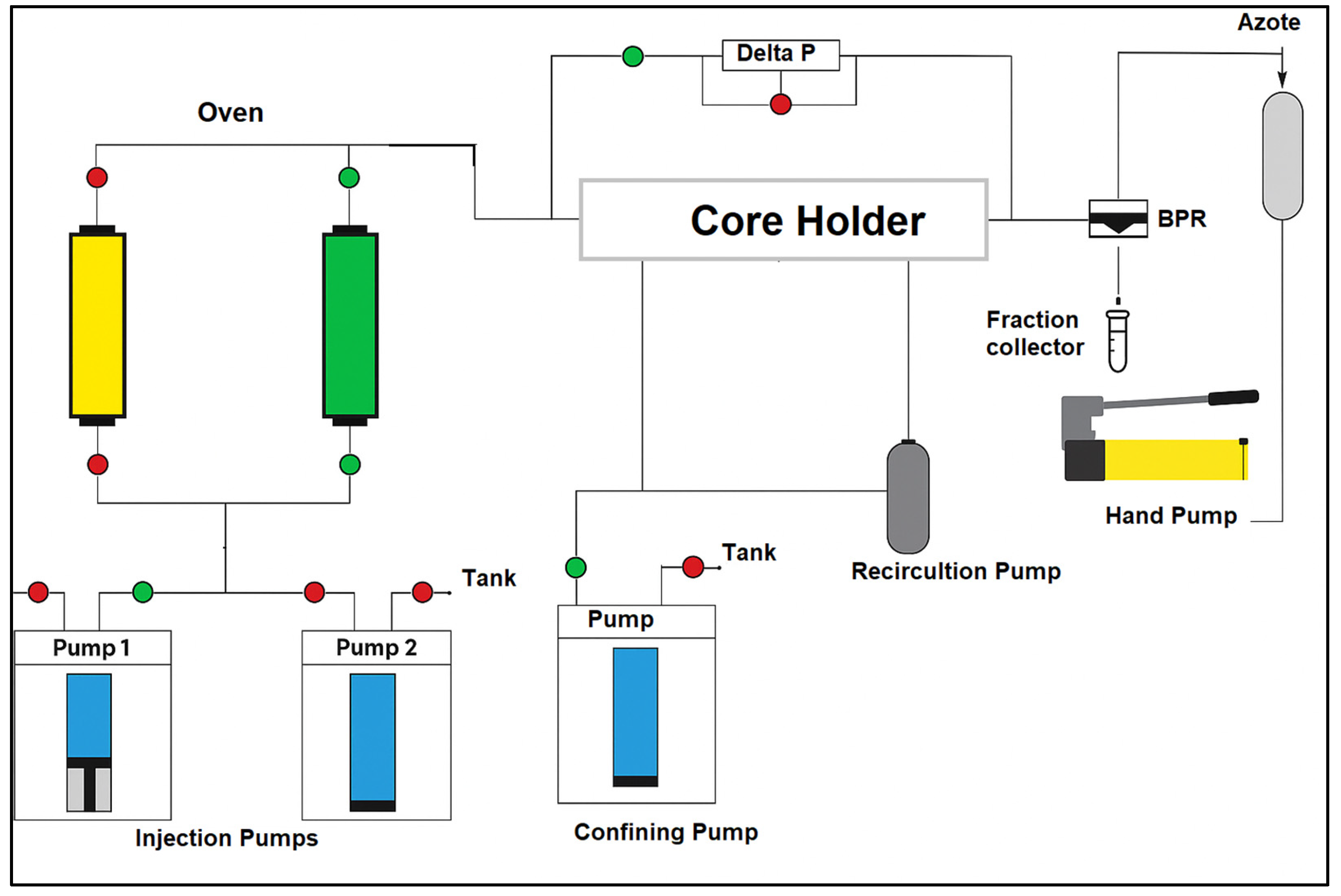
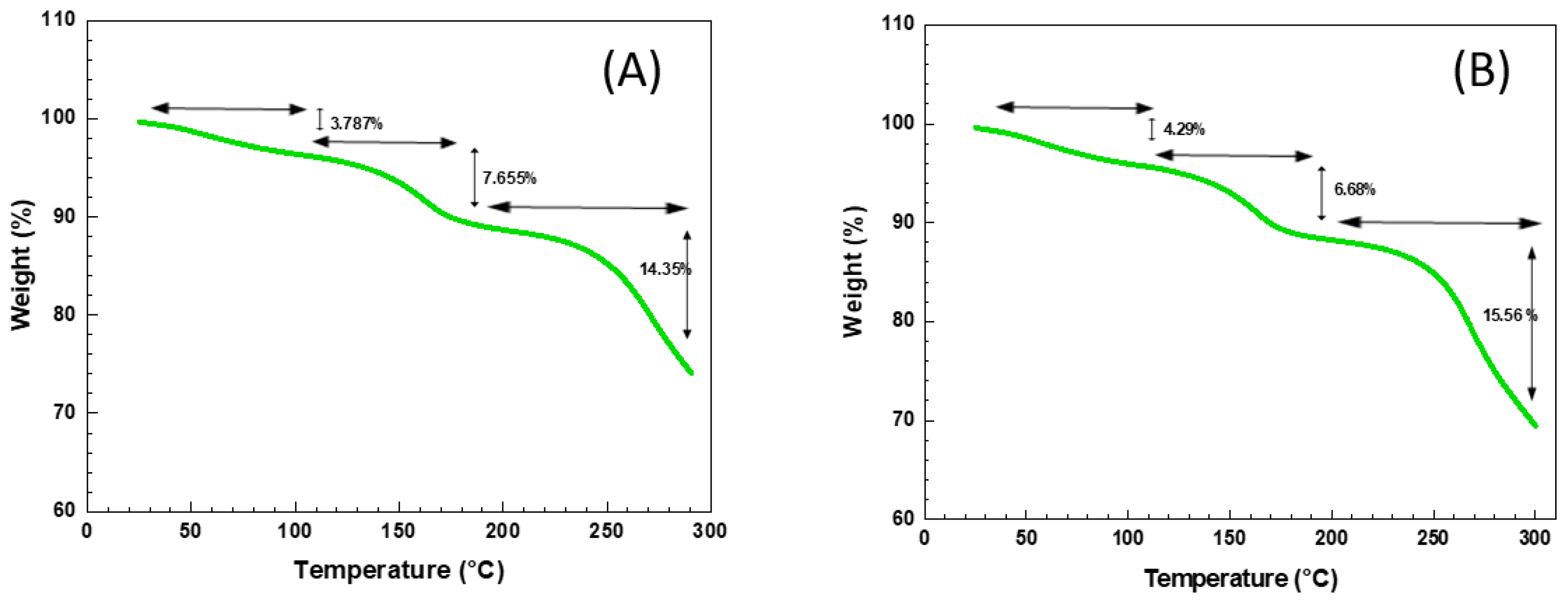
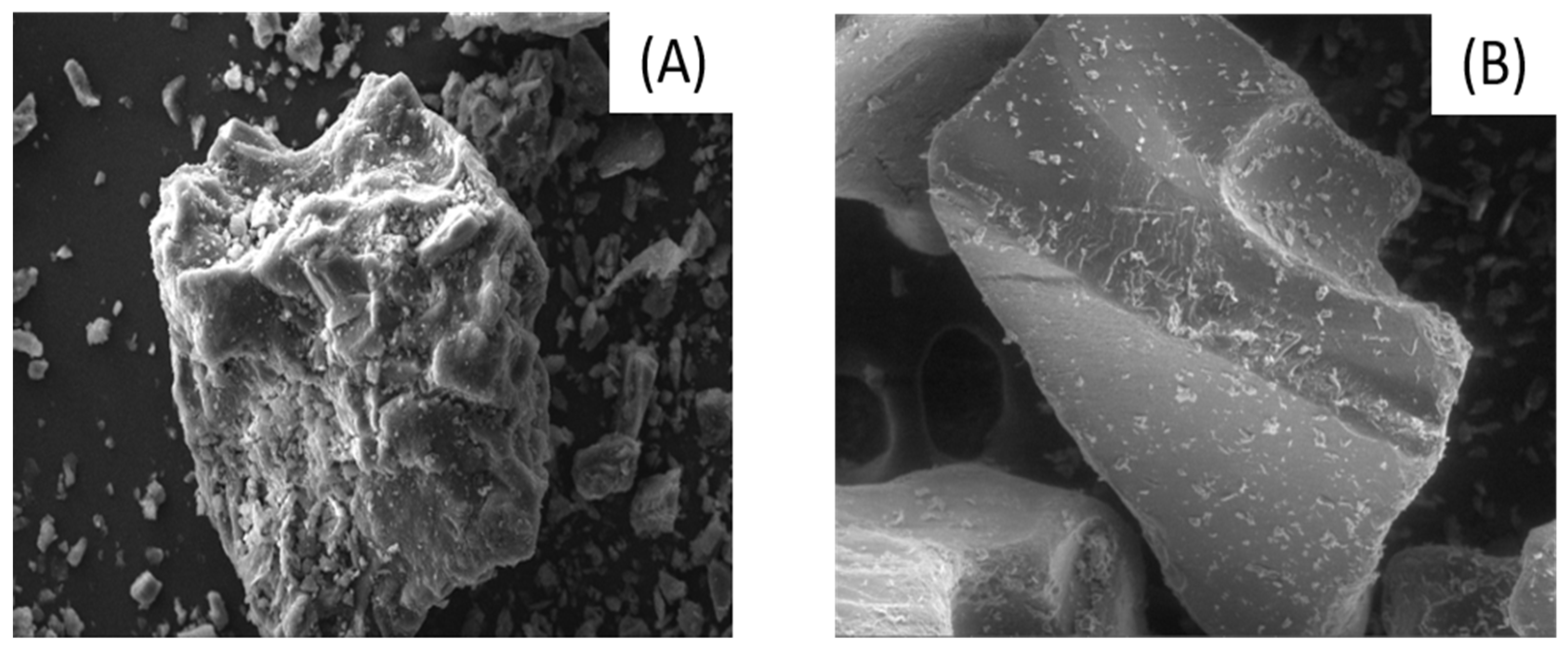

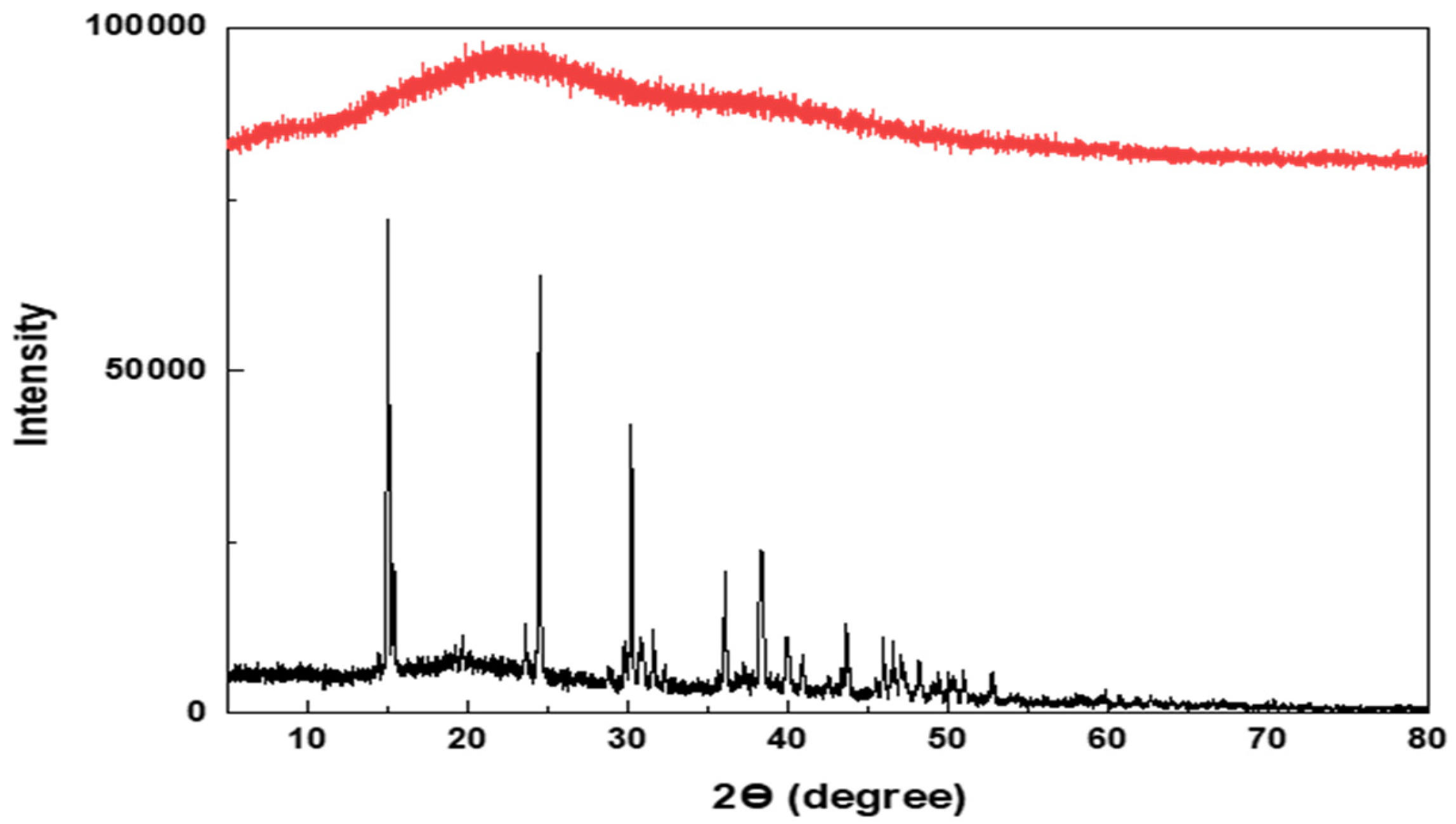

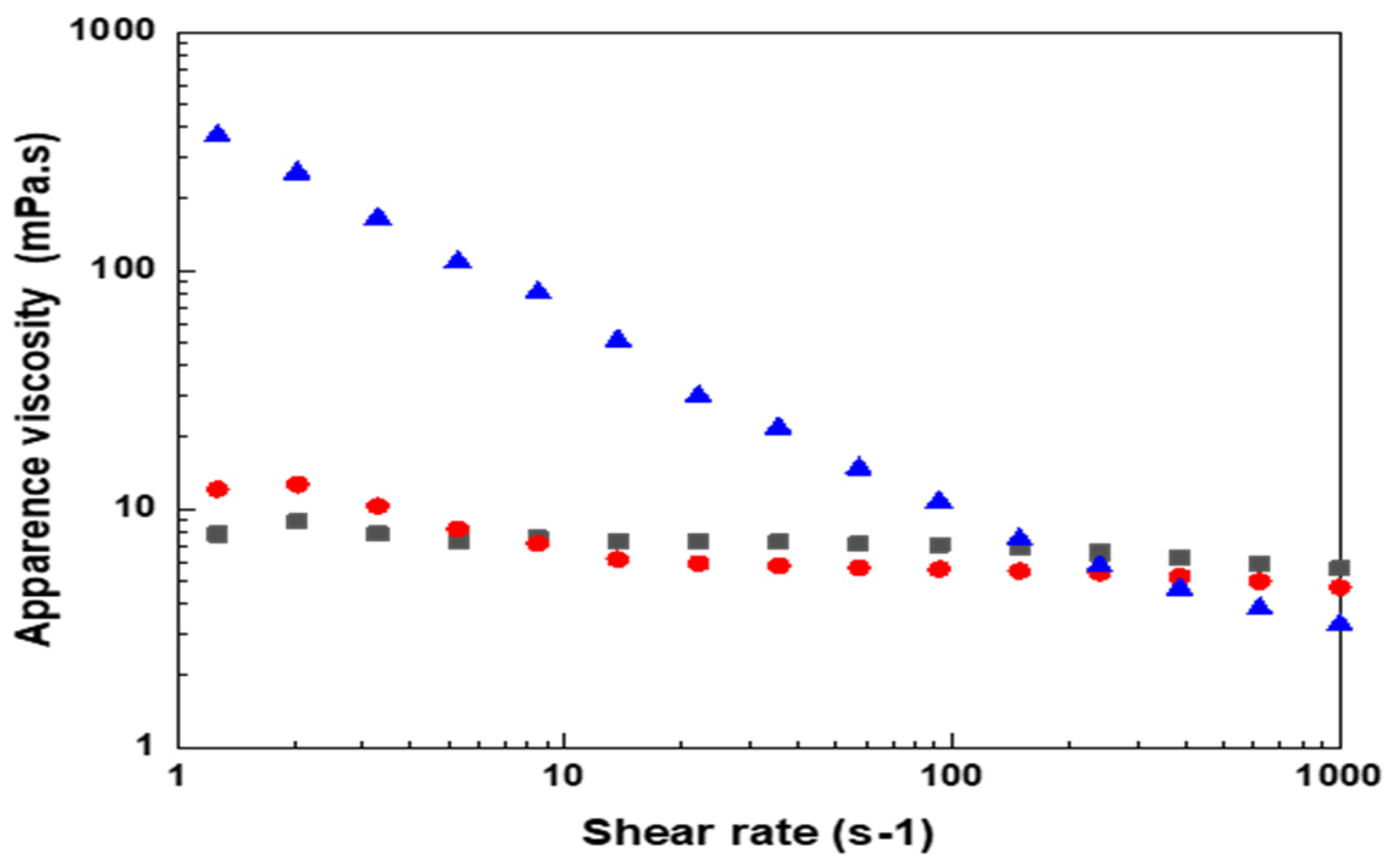

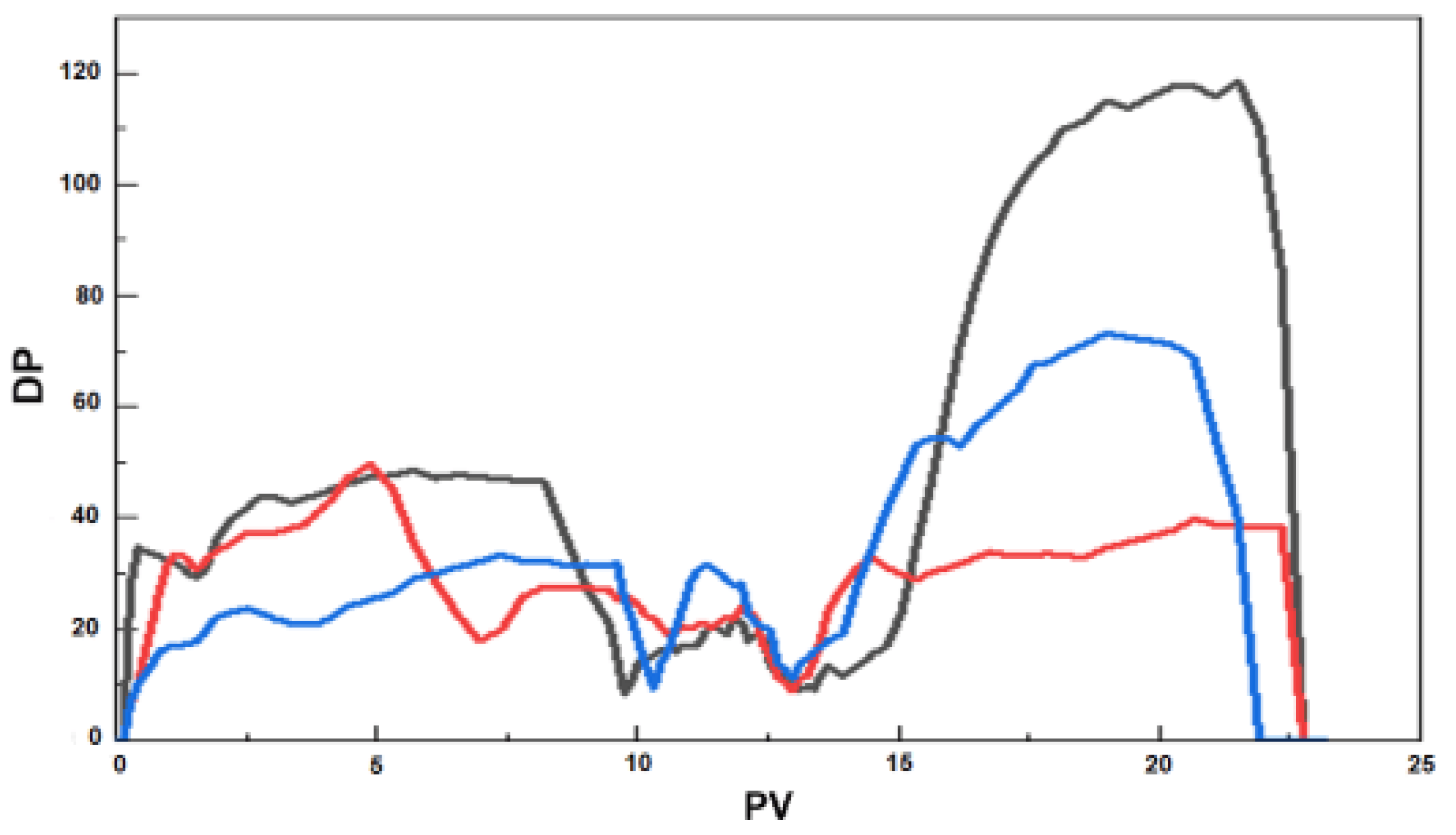
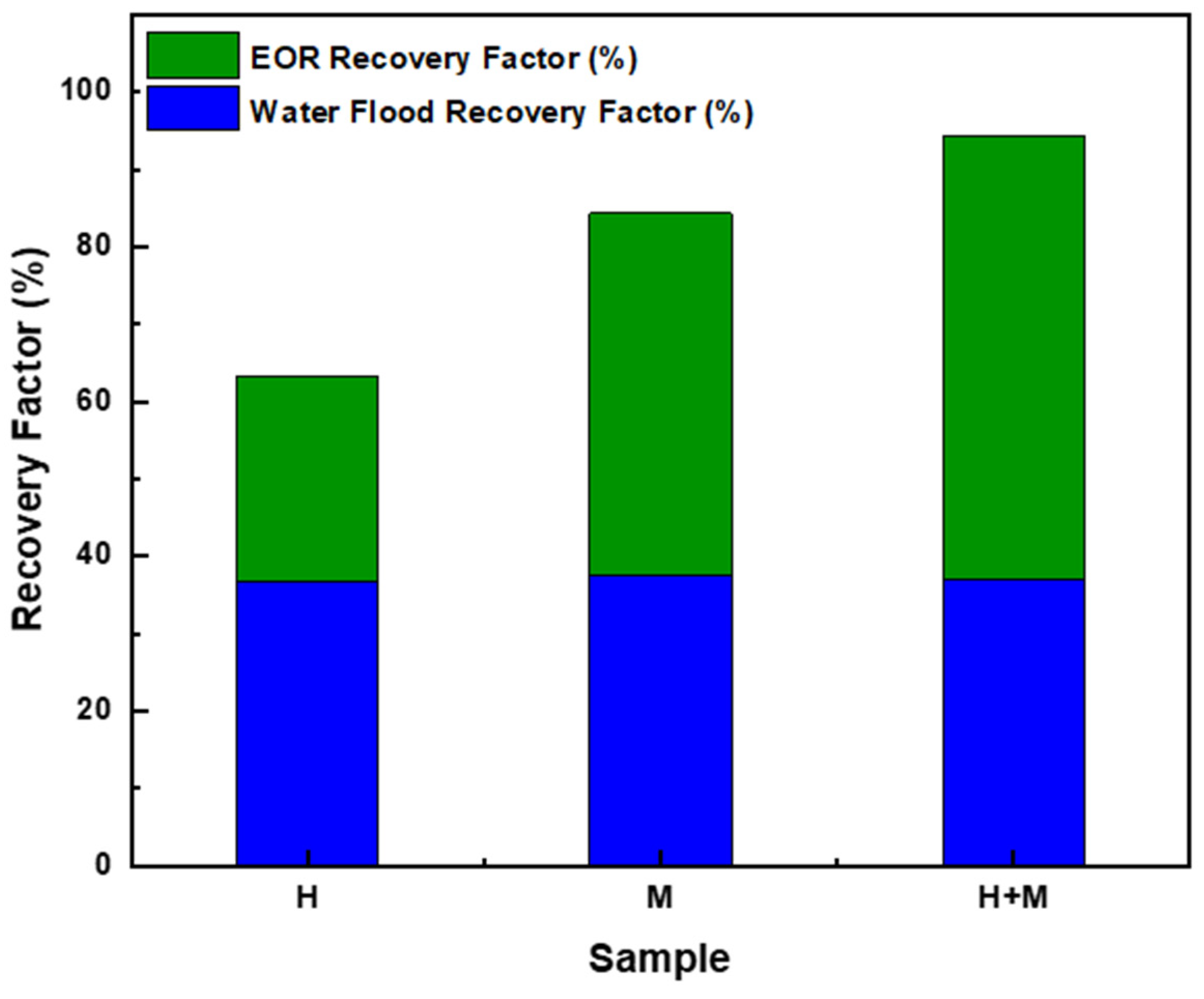
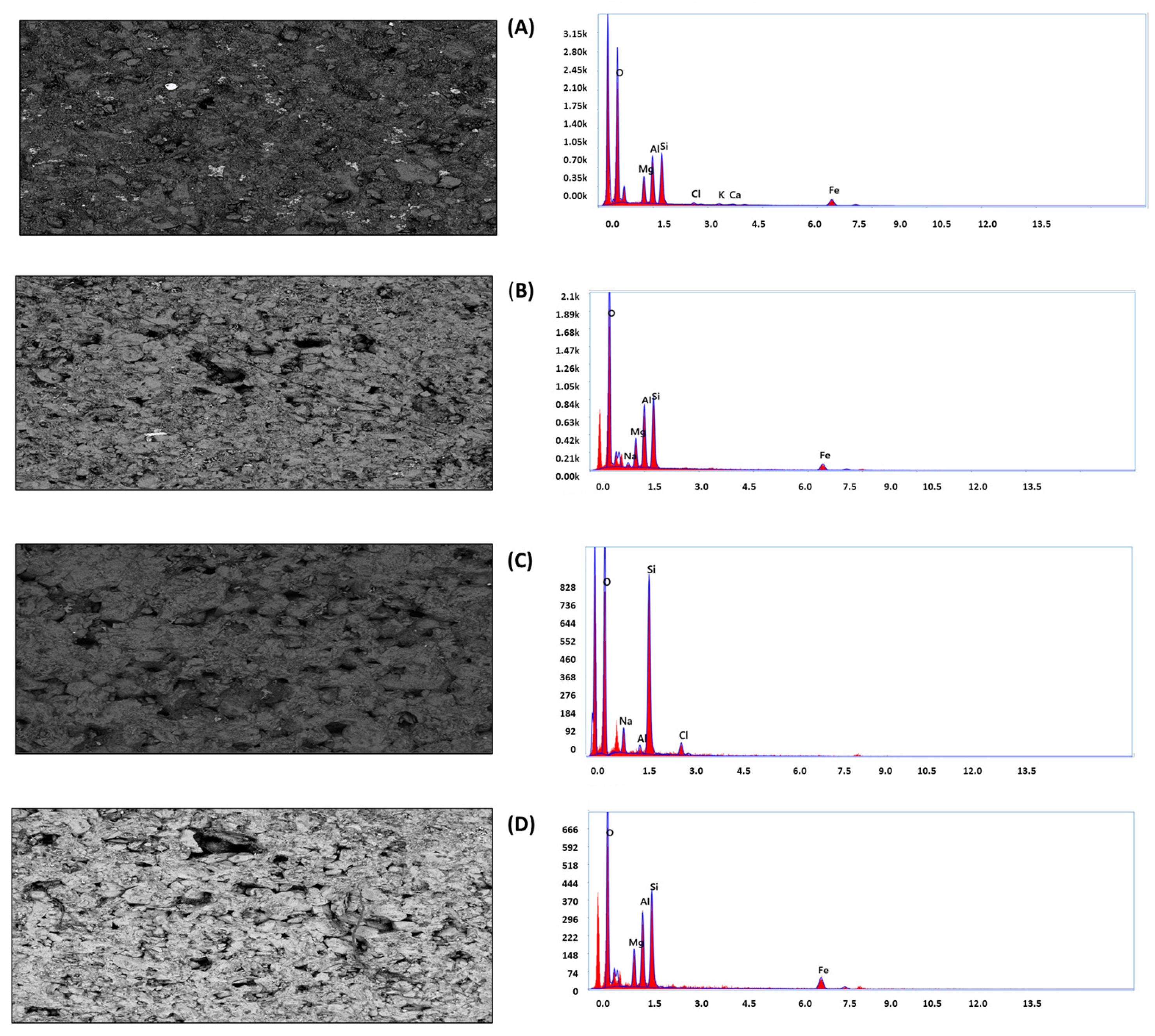

Disclaimer/Publisher’s Note: The statements, opinions and data contained in all publications are solely those of the individual author(s) and contributor(s) and not of MDPI and/or the editor(s). MDPI and/or the editor(s) disclaim responsibility for any injury to people or property resulting from any ideas, methods, instructions or products referred to in the content. |
© 2025 by the authors. Licensee MDPI, Basel, Switzerland. This article is an open access article distributed under the terms and conditions of the Creative Commons Attribution (CC BY) license (https://creativecommons.org/licenses/by/4.0/).
Share and Cite
Bourkaib, K.; Elamri, A.; Hadjsadok, A.; Izountar, C.E.; Abimouloud, M.F.; Bouhafs, A.; Isseri, A.; Maatalah, D.; Braik, M.; Guezei, A.; et al. Comparative Study of Opuntia ficus-indica Polymers, HPAM, and Their Mixture for Enhanced Oil Recovery in the Hassi Messaoud Reservoir, Algeria. Processes 2025, 13, 1794. https://doi.org/10.3390/pr13061794
Bourkaib K, Elamri A, Hadjsadok A, Izountar CE, Abimouloud MF, Bouhafs A, Isseri A, Maatalah D, Braik M, Guezei A, et al. Comparative Study of Opuntia ficus-indica Polymers, HPAM, and Their Mixture for Enhanced Oil Recovery in the Hassi Messaoud Reservoir, Algeria. Processes. 2025; 13(6):1794. https://doi.org/10.3390/pr13061794
Chicago/Turabian StyleBourkaib, Kamila, Adel Elamri, Abdelkader Hadjsadok, Charaf Eddine Izountar, Mohamed Fouad Abimouloud, Amin Bouhafs, Ammar Isseri, Djamila Maatalah, Meriem Braik, Abdelali Guezei, and et al. 2025. "Comparative Study of Opuntia ficus-indica Polymers, HPAM, and Their Mixture for Enhanced Oil Recovery in the Hassi Messaoud Reservoir, Algeria" Processes 13, no. 6: 1794. https://doi.org/10.3390/pr13061794
APA StyleBourkaib, K., Elamri, A., Hadjsadok, A., Izountar, C. E., Abimouloud, M. F., Bouhafs, A., Isseri, A., Maatalah, D., Braik, M., Guezei, A., & Harzallah, O. A. (2025). Comparative Study of Opuntia ficus-indica Polymers, HPAM, and Their Mixture for Enhanced Oil Recovery in the Hassi Messaoud Reservoir, Algeria. Processes, 13(6), 1794. https://doi.org/10.3390/pr13061794





